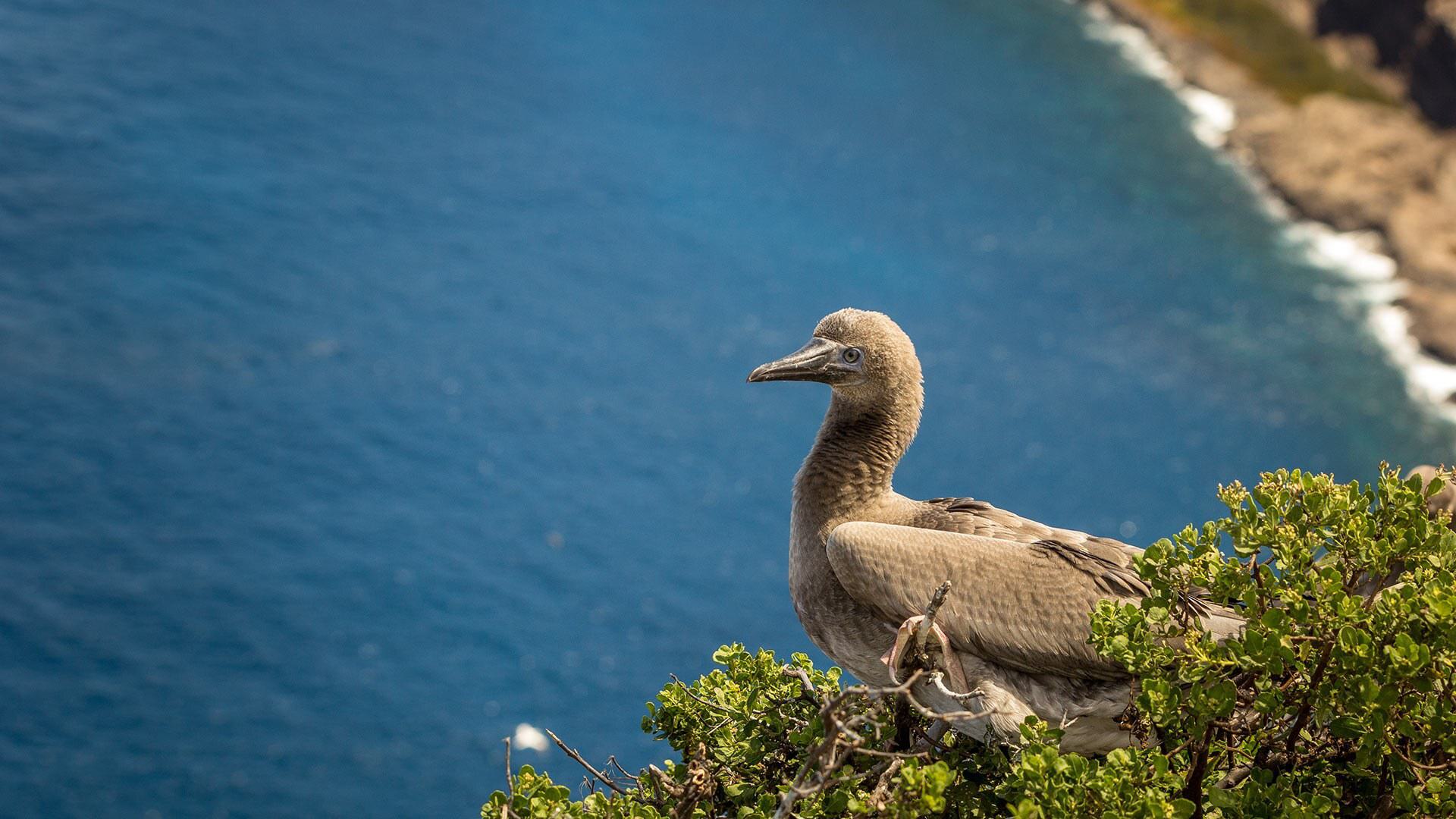Restoring and “rewilding” islands decimated by invasive species benefits not only terrestrial ecosystems, but also coastal and marine environments, according to new findings from a multi-institutional team that includes a University of Maryland entomologist.
The link between land and sea significantly impacts ocean health as well as biodiversity, climate resilience and human well-being—a confluence of factors that suggests conservation efforts should address the interconnectedness of ecosystems rather than simply pursuing individual pieces through siloed efforts, the team reported in the paper published yesterday in the Proceedings of the National Academy of Sciences.
“Indigenous cultures on islands managed watersheds from ‘ridge to reef,’ recognizing that land use has consequences for the sustainability of coastal ecosystems downstream,” said UMD Associate Professor Daniel Gruner, a co-author of the paper. “We’re adapting this approach to improve our conservation efforts by targeting these connections between land and sea.”
Applying knowledge of the marine benefits of island restoration worldwide would maximize returns of conservation management investments for people, wildlife and the planet, said Stuart A. Sandin, lead author of the paper and a marine ecologist at Scripps Institution of Oceanography at the University of California San Diego.
Islands support some of the most valuable ecosystems on Earth, nurturing a disproportionate amount of rare plants, animals, communities and cultures found nowhere else. Healthy land-sea ecosystems depend on the natural flow of nutrients from oceans to islands and from islands to oceans, facilitated by “connector species,” such as seabirds, seals and land crabs.
Research shows that islands with high seabird populations, for example, which feed in the open ocean and bring large quantities of nutrients onto islands through their guano deposits, are associated with larger fish populations, faster-growing coral reefs and increased rates of coral recovery from climate change impacts.
Many seabird species, however, have been driven to local or global extinction or near-extinction due to invasive non-native mammals that eat bird eggs and young hatchlings. The loss of these connector species populations often results in ecosystem collapse, both on land and in the sea.
“Invasive mammalian species, like rats, wild European boars and mongooses, have a disproportionate negative impact on endemic island communities that don’t have natural defenses against them,” Gruner said. “Restoring the islands to how they were before these invasive species were introduced is one of the most effective methods to protect and improve ecosystems on land.”
The research team also discovered that islands with higher rainfall, lower wave energy (calmer tides) and other conditions consistent with high land-sea connectivity could produce substantial marine co-benefits after invasive species removal and island rewilding.
One candidate with such features was Floreana Island, located in Ecuador’s Galapagos Archipelago. Though indigenous tortoises once existed on the island, they were particularly vulnerable to invasive predators and were declared extinct. As a result, the island’s terrestrial and marine ecosystems fell into an imbalance when the loss of the tortoises’ ecological role as grazers harmed native plant life.
Another site with high land-sea connectivity potential was Sonsorol Island, Palau, an island nation located in the Pacific. Because of the island’s geographical remoteness, residents primarily relied on local resources available to them. The community once lived harmoniously with its environment and thrived on the natural resources provided by the land and sea. However, the significantly reduced seabird population due to invasive species significantly slowed nutrient deposition, which in turn limited the productivity of surrounding coral reefs.
To help address the needs of island ecosystems and human residents, the researchers collaborated with nonprofit conservationists, government agency representatives, island communities and other stakeholders to develop new guidelines to shape where the most impactful marine co-benefits of island restoration could occur.
Both the Sonsorol and Floreana island restoration projects are part of an ambitious new environmental campaign called the Island-Ocean Connection Challenge, which aims to restore and rewild at least 40 globally significant island ecosystems to benefit islands, oceans and communities by 2030. For decades, residents of the islands have witnessed the negative effects of invasive species firsthand; now they are able to actively shape their homes’ future by playing a central role in the islands’ restoration.
“There are still relatively few studies that document strong land-to-sea impacts,” Gruner said. “We hope that this paper will help stimulate more research looking into that critical link between terrestrial and marine ecosystems, which can ultimately help stakeholders prioritize where to allocate our limited resources and conservation efforts.”

